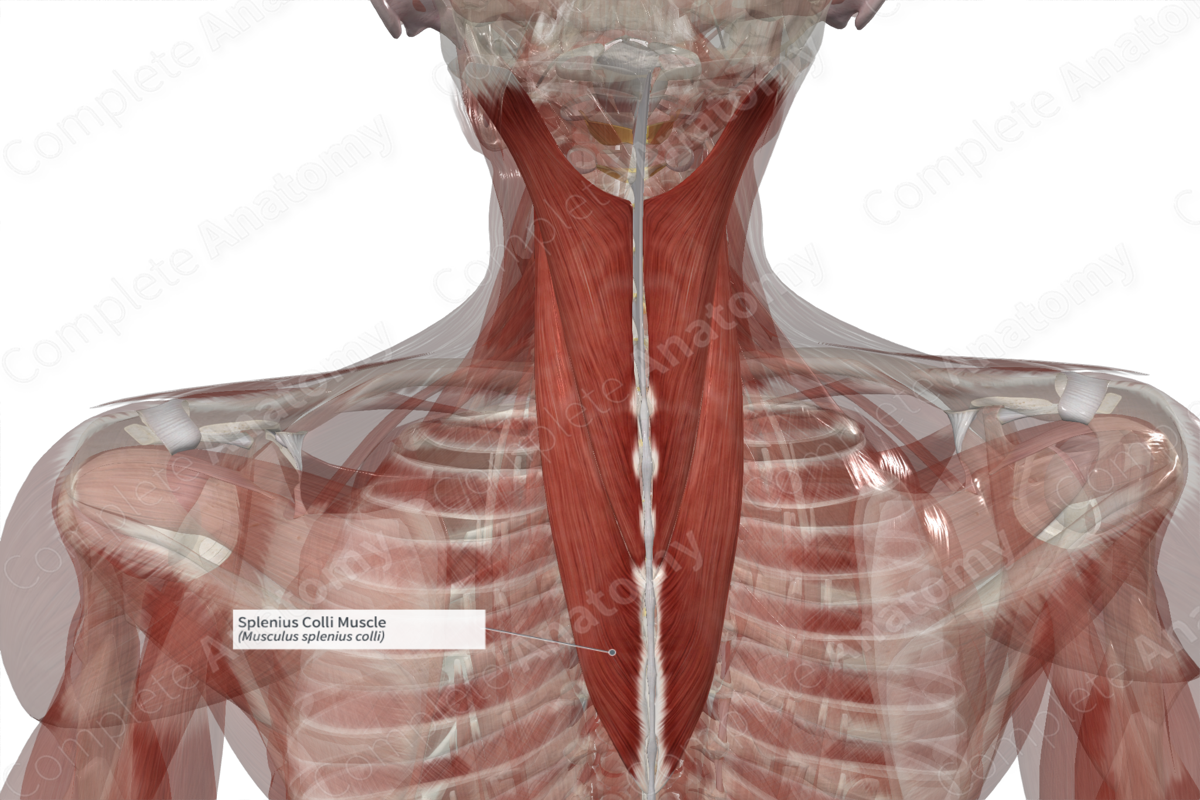
Quick Facts
Origin: Spinous processes of T3-T6 vertebrae.
Insertion: Transverse processes of C1-C3 vertebrae.
Action: Extends, rotates, and laterally flexes the neck at cervical vertebral joints.
Innervation: Posterior rami of lower cervical nerves.
Arterial Supply: Descending branch of occipital artery and deep cervical artery.
Related parts of the anatomy
Origin
The splenius colli muscle originates from the:
- spinous processes of the third to sixth thoracic vertebrae;
- adjacent supraspinous ligaments.
Insertion
The fibers of the splenius colli muscle travel superolaterally and insert, via a narrow tendon, onto the transverse processes of the atlas (first cervical vertebra) and axis (second cervical vertebra). In some individuals, the splenius colli muscle can also insert onto the posterior tubercle of the transverse process of third cervical vertebra.
Key Features & Anatomical Relations
The splenius colli muscle is one of the two transversospinal muscles, the other being the splenius capitis muscle. It is found in the posterior neck and upper back regions and is a thin, convergent type of skeletal muscle.
It is located:
- deep to trapezius, serratus posterior superior, and rhomboid major muscles;
- superficial to the transversospinal and erector spinae muscles;
- lateral to the splenius capitis muscle.
Actions
The splenius colli muscle is involved in multiple actions:
- during unilateral contraction, it rotates and laterally flexes the neck to the same side at the cervical vertebral joints (Moore, Dalley and Agur, 2009);
- during bilateral contraction, it extends the neck (Standring, 2016).
References
Moore, K. L., Dalley, A. F. and Agur, A. M. R. (2009) Clinically Oriented Anatomy. Lippincott Williams & Wilkins.
Standring, S. (2016) Gray's Anatomy: The Anatomical Basis of Clinical Practice. Gray's Anatomy Series 41st edn.: Elsevier Limited.




